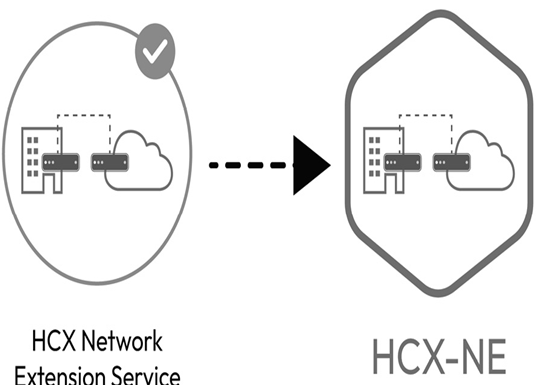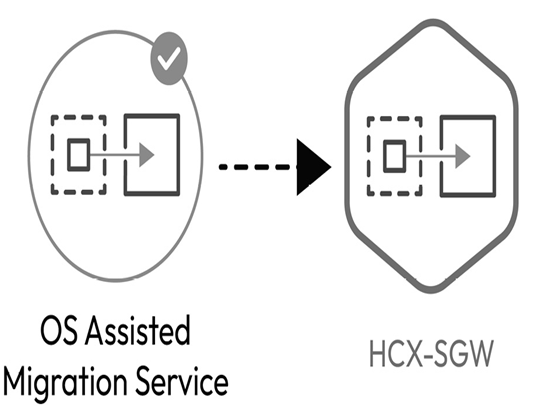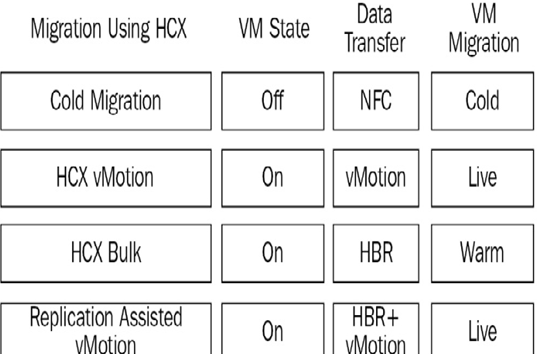An HCX NE appliance facilitates the layer 2 extension of VLANs between two sites by seamlessly distributing the layer 2 broadcast traffic between two broadcast domains. HCX NE builds a VPN tunnel to encapsulate the extension traffic and supports the extension of multiple VLANs (eight per NE appliance).
For all extended VLANs, the default gateway still resides on-premises (or, in the case of a cloud-to-cloud extension, where the segment was originally created). All the network communication that requires routing, including traffic to AWS services, will first be routed back to the original gateway location. You can leverage the mobility optimized network (MON) feature to provide local routing within the SDDC.

Figure 3.5 – The HCX NE Service symbol
OS Assisted Migrations (OSAM) is used for non-vSphere to vSphere virtual machine migrations. Guest virtual machines establish a connection and register with a Sentinel Gateway (SGW) appliance at the source site. Subsequently, the SGW initiates a forwarding connection with a Sentinel Data Receiver (SDR) appliance at the destination vSphere site. The HCX Sentinel software is installed on each guest virtual machine slated for migration to initiate the discovery and data replication process. Once the software is installed, a secure connection is formed between the guest virtual machine and the HCX SGW. As the Sentinel software is deployed on the guest virtual machines, HCX builds an inventory of candidates eligible for migration. The following figure shows the OSAM service mapping to the HCX-SGW appliance:

Figure 3.6 – HCX OSAM
Migration types
HCX offers multiple migration options, depending on your design requirements, acceptable downtime, bandwidth availability, latency, and other factors.
The following figure shows a summary of the different migration types, as well as their associated VM state and data transfer protocols:

Figure 3.7 – A summary of the migration options in HCX
HCX-assisted vMotion
HCX uses vSphere vMotion capabilities to migrate VMs within a configured pair of sites. The main advantage of this migration type is that your workload stays online for the whole migration process and is instantly available on VMware Cloud on AWS SDDC, if combined with a layer 2 extension of the VLAN.
However, vMotion is a very resource-intensive process and has an extensive set of pre-requisites (https://docs.vmware.com/en/VMware-Cloud-on-AWS/services/com.vmware.vmc-aws-operations/GUID-DAE9B318-294A-4422-BBF4-82AE9DDFF043.html), updated with the latest version of HCX. Another important consideration is that HCX only supports vMotion of a single virtual machine at a time. You can schedule a group of virtual machines to be migrated, but the process is serial and might take considerable time to complete.